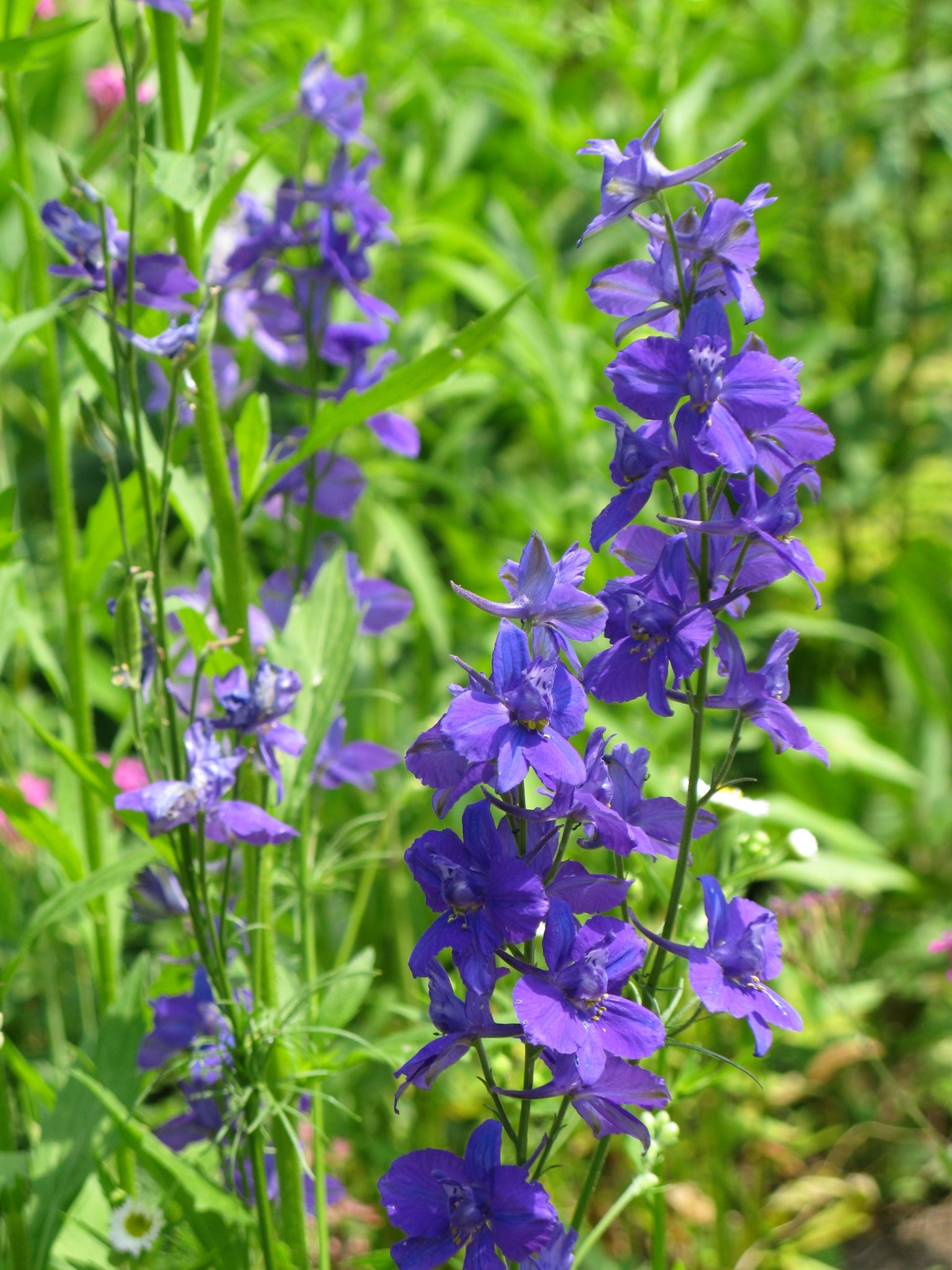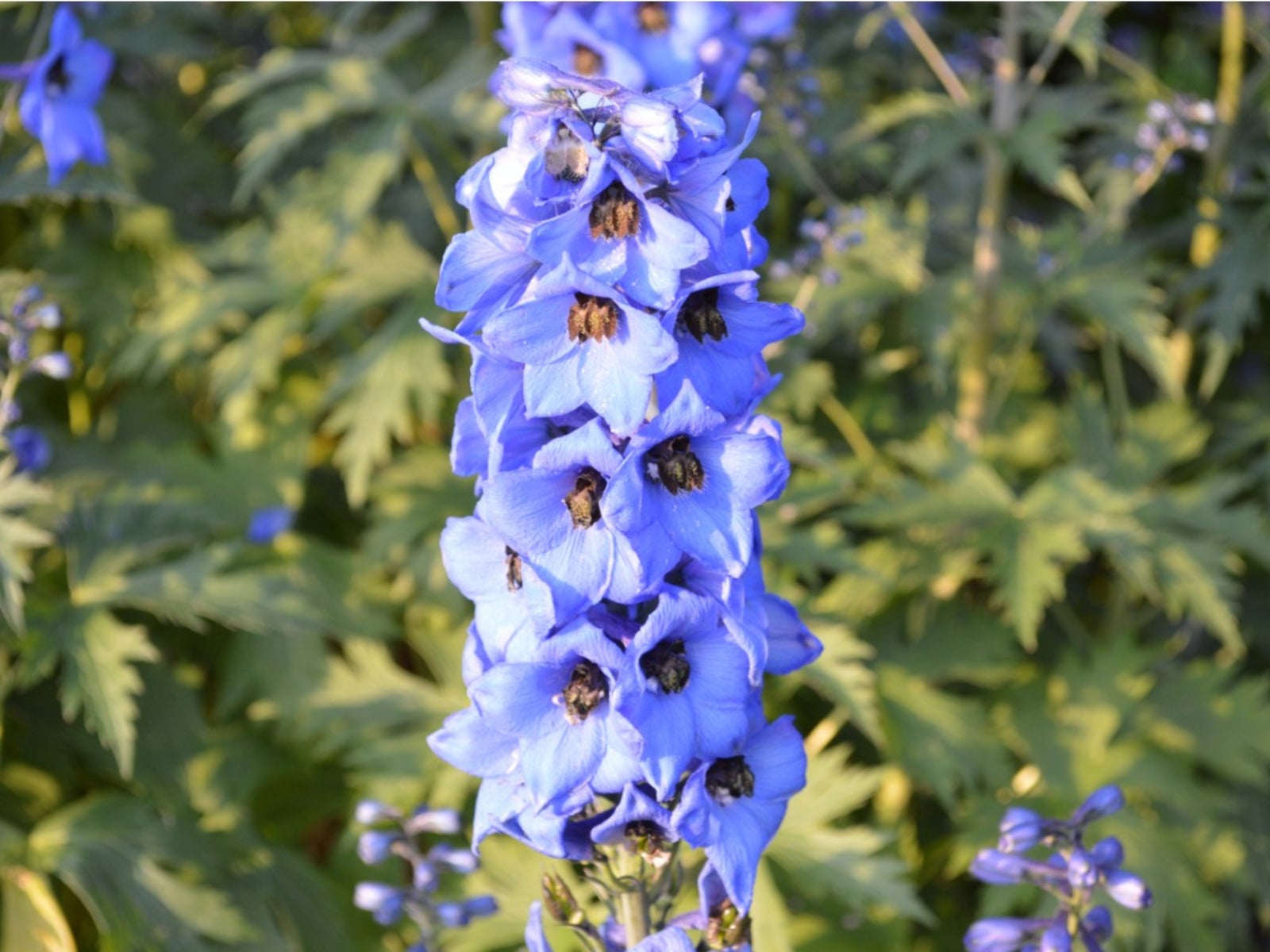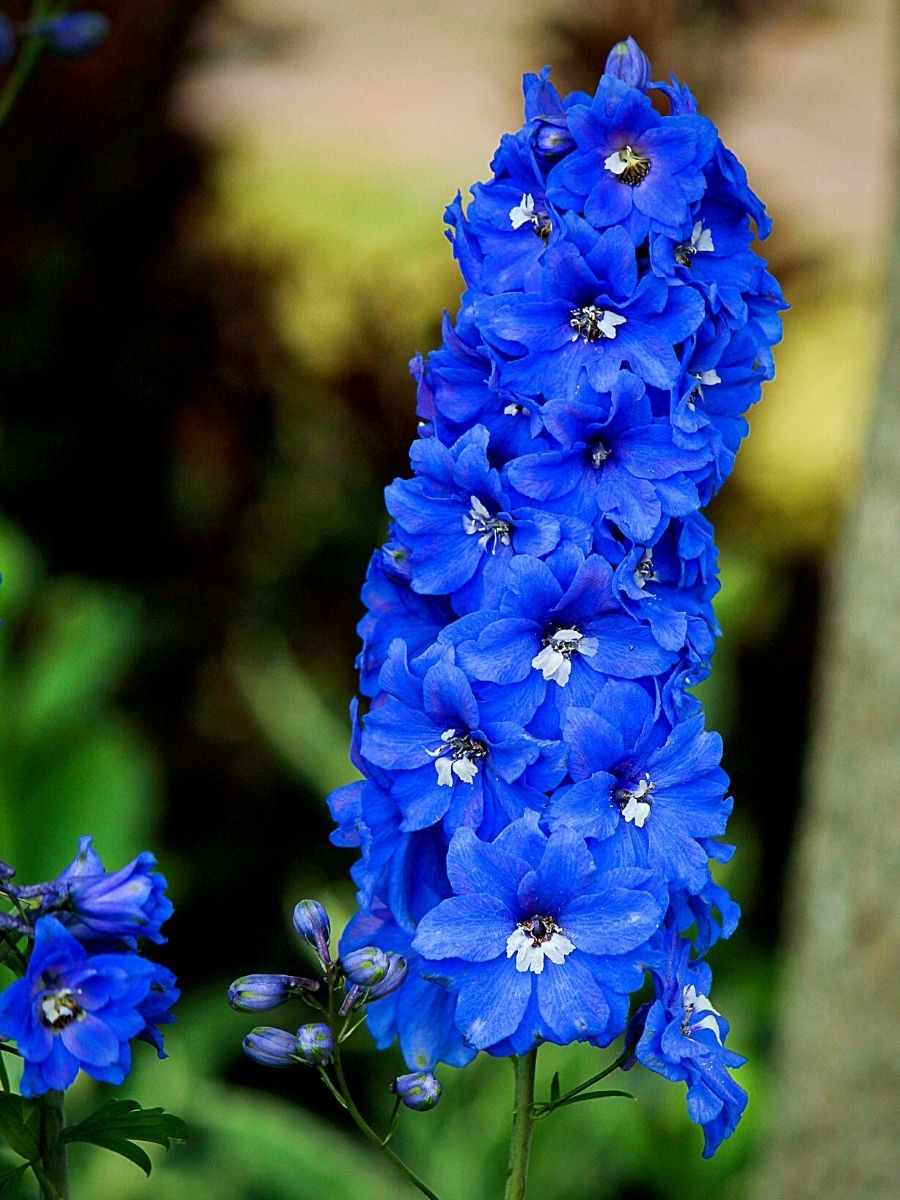Unveiling the Mystery of Larkspur’s Appearance
Larkspur, a member of the Delphinium genus, is a unique and fascinating plant that has captivated gardeners and wildflower enthusiasts for centuries. With its striking appearance and versatility, it’s no wonder that many people are eager to learn more about this enigmatic plant. But what does larkspur look like, exactly? Understanding the physical characteristics of larkspur is essential for accurate identification, whether you’re a seasoned gardener or a nature enthusiast.
Accurate identification of larkspur is crucial for several reasons. For gardeners, knowing what larkspur looks like can help you choose the right variety for your garden and provide the best growing conditions. For wildflower enthusiasts, identifying larkspur can enhance your appreciation of this beautiful plant and allow you to distinguish it from similar-looking species. Additionally, larkspur has been used in traditional medicine for centuries, and understanding its appearance can aid in its safe and effective use.
In the following sections, we’ll delve into the physical characteristics of larkspur, exploring its height, leaf shape, flower color, and growth habits. We’ll also examine the different species of larkspur, discuss common lookalikes, and provide tips on how to use visual aids for identification. By the end of this article, you’ll be equipped with the knowledge and skills to confidently identify larkspur and appreciate its unique beauty.
How to Recognize Larkspur in the Wild
When trying to identify larkspur in the wild, it’s essential to take note of its physical appearance. Larkspur is a perennial plant that can grow up to 6 feet tall, with a slender stem and a rosette of leaves at its base. The leaves are typically palmate, with 5-7 lobes, and are a deep green color. The flowers are the most distinctive feature of larkspur, with a unique shape and color that sets them apart from other plants.
The flowers of larkspur are typically blue or purple, although some varieties can be white or pink. They are arranged in a spike-like formation along the stem, with each flower having a distinctive spur-like shape. The flowers are also relatively large, with some varieties reaching up to 2 inches in length. When trying to identify larkspur, look for these distinctive flowers, as they are a key characteristic of the plant.
In addition to its flowers, larkspur also has a distinctive growth habit. It typically grows in well-drained soil and full sun, and can be found in a variety of habitats, including meadows, woods, and along streams. When trying to identify larkspur, look for these growth habits, as they can help distinguish it from other plants.
It’s also important to note that larkspur can be confused with other plants, such as delphinium and monk’s hood. However, larkspur has a number of distinctive features that set it apart from these plants. For example, the leaves of larkspur are typically more deeply lobed than those of delphinium, and the flowers are a deeper blue color. By taking note of these differences, you can accurately identify larkspur and distinguish it from other plants.
Larkspur Varieties: A Closer Look at Different Species
While larkspur is often thought of as a single plant, there are actually several different species within the Delphinium genus. Each of these species has its own unique characteristics, growth patterns, and features that can aid in identification. By understanding the different varieties of larkspur, you can gain a deeper appreciation for the diversity of this plant and improve your chances of accurate identification.
One of the most common species of larkspur is Delphinium grandiflorum, also known as Chinese larkspur. This plant is known for its vibrant blue flowers and compact growth habit, making it a popular choice for gardens and floral arrangements. Another species, Delphinium consolida, is known for its smaller, more delicate flowers and is often used in wildflower arrangements.
Some species of larkspur, such as Delphinium elatum, have distinct markings or colors that can aid in identification. For example, the flowers of Delphinium elatum have a distinctive white or yellow center, surrounded by a ring of blue or purple petals. Other species, such as Delphinium barbeyi, have a more subtle color pattern, with flowers that are a pale blue or purple color.
In addition to their unique features, different species of larkspur also have different growth patterns and habits. Some species, such as Delphinium grandiflorum, are known for their upright growth habit and can grow quite tall, while others, such as Delphinium consolida, have a more compact growth habit and are often used in container gardens.
By understanding the different varieties of larkspur and their unique characteristics, you can improve your chances of accurate identification and gain a deeper appreciation for the diversity of this plant. Whether you’re a seasoned gardener or a wildflower enthusiast, learning about the different species of larkspur can help you to better understand and appreciate this unique plant.
What to Look for in Larkspur Flowers
The flowers of larkspur are one of the most distinctive and recognizable features of the plant. They are typically blue or purple in color, although some varieties can be white or pink. The flowers are arranged in a spike-like formation along the stem, with each flower having a distinctive shape and size. Understanding the characteristics of larkspur flowers can help you to accurately identify the plant, even when other features are not visible.
One of the key features of larkspur flowers is their shape. They are typically bell-shaped, with a distinctive spur-like shape at the back of the flower. The flowers are also relatively large, with some varieties reaching up to 2 inches in length. The color of the flowers can also be an important identifying feature, as different varieties can have distinct shades of blue, purple, or white.
In addition to their shape and color, the arrangement of larkspur flowers can also be an important identifying feature. The flowers are typically arranged in a spike-like formation along the stem, with each flower facing upwards. This arrangement can help to distinguish larkspur from other plants that have similar-looking flowers.
When trying to identify larkspur, it’s also important to look for the presence of a distinctive “beard” or “lip” on the lower petal of the flower. This feature is unique to larkspur and can help to distinguish it from other plants. By taking note of these characteristics, you can accurately identify larkspur and distinguish it from other plants.
Understanding the characteristics of larkspur flowers can also help you to appreciate the beauty and diversity of this plant. Whether you’re a seasoned gardener or a wildflower enthusiast, learning about the unique features of larkspur flowers can help you to better appreciate this unique plant.
Larkspur Leaves and Stems: Identifying Characteristics
The leaves and stems of larkspur are often overlooked when it comes to identification, but they can provide valuable clues about the plant’s identity. The leaves of larkspur are typically palmate, with 5-7 lobes, and are a deep green color. They are also relatively large, with some varieties reaching up to 6 inches in length.
The stems of larkspur are typically slender and upright, with a smooth, hairless texture. They can grow quite tall, with some varieties reaching up to 6 feet in height. The stems are also often branched, with multiple stems emerging from a single base.
One of the key identifying features of larkspur leaves and stems is their texture. The leaves are typically smooth and hairless, while the stems are often covered in a fine, downy hair. This texture can help to distinguish larkspur from other plants that have similar-looking leaves and stems.
Another important feature to look for is the arrangement of the leaves and stems. The leaves of larkspur are typically arranged in a rosette pattern at the base of the plant, while the stems emerge from the center of the rosette. This arrangement can help to distinguish larkspur from other plants that have similar-looking leaves and stems.
When trying to identify larkspur, it’s also important to look for the presence of a distinctive “sheath” at the base of the stem. This sheath is a modified leaf that wraps around the stem, and can help to distinguish larkspur from other plants. By taking note of these characteristics, you can accurately identify larkspur and distinguish it from other plants.
Common Lookalikes: Plants That Resemble Larkspur
While larkspur is a unique and distinctive plant, there are several other plants that may be mistaken for it. These lookalikes can be confusing, especially for those who are new to identifying plants. However, by understanding the similarities and differences between larkspur and its lookalikes, you can become more confident in your ability to identify this plant.
One of the most common lookalikes for larkspur is delphinium. Like larkspur, delphinium is a tall, upright plant with blue or purple flowers. However, delphinium has a more compact growth habit and its flowers are typically more densely packed on the stem. Additionally, delphinium has a distinctive “beard” or “lip” on the lower petal of the flower, which is not present on larkspur.
Another plant that may be mistaken for larkspur is monk’s hood. Like larkspur, monk’s hood has blue or purple flowers and a similar growth habit. However, monk’s hood has a more rounded leaf shape and its flowers are typically more bell-shaped. Additionally, monk’s hood has a distinctive “hood” or “helmet” shape on the upper petal of the flower, which is not present on larkspur.
Other plants that may be mistaken for larkspur include foxglove and lupine. These plants have similar growth habits and flower colors, but they can be distinguished from larkspur by their leaf shape and flower arrangement. By understanding the similarities and differences between these plants, you can become more confident in your ability to identify larkspur and distinguish it from its lookalikes.
When trying to identify larkspur, it’s also important to consider the plant’s habitat and growth conditions. Larkspur typically grows in well-drained soil and full sun, and is often found in meadows, woods, and along streams. By considering these factors, you can become more confident in your ability to identify larkspur and distinguish it from its lookalikes.
Using Visual Aids for Larkspur Identification
Visual aids can be a powerful tool for identifying larkspur, especially for those who are new to plant identification. Photographs, illustrations, and diagrams can provide a detailed and accurate representation of the plant’s characteristics, making it easier to identify.
One of the most useful visual aids for larkspur identification is a photograph of the plant in its natural habitat. This can provide a clear view of the plant’s growth habits, leaf shape, and flower color, making it easier to identify. Additionally, photographs can be used to compare the plant’s characteristics to those of other plants, helping to rule out lookalikes.
Illustrations and diagrams can also be useful for larkspur identification. These can provide a detailed and accurate representation of the plant’s characteristics, including its leaf shape, flower structure, and growth habits. Additionally, illustrations and diagrams can be used to highlight specific features of the plant, making it easier to identify.
Another useful visual aid for larkspur identification is a botanical key. A botanical key is a diagram or illustration that shows the different characteristics of a plant, making it easier to identify. Botanical keys can be especially useful for identifying larkspur, as they can provide a clear and accurate representation of the plant’s characteristics.
When using visual aids for larkspur identification, it’s also important to consider the plant’s habitat and growth conditions. Larkspur typically grows in well-drained soil and full sun, and is often found in meadows, woods, and along streams. By considering these factors, you can become more confident in your ability to identify larkspur and distinguish it from its lookalikes.
By using visual aids, such as photographs, illustrations, and diagrams, you can become more confident in your ability to identify larkspur and distinguish it from its lookalikes. Whether you’re a seasoned gardener or a wildflower enthusiast, visual aids can provide a powerful tool for identifying this unique and beautiful plant.
Putting it All Together: A Step-by-Step Guide to Identifying Larkspur
Now that we’ve explored the different characteristics of larkspur, let’s put it all together and provide a step-by-step guide to identifying this unique plant.
Step 1: Observe the plant’s growth habits and height. Larkspur typically grows to be 2-4 feet tall, with a slender stem and a rosette of leaves at its base.
Step 2: Examine the leaves and stems. Larkspur leaves are typically palmate, with 5-7 lobes, and are a deep green color. The stems are slender and upright, with a smooth, hairless texture.
Step 3: Look at the flowers. Larkspur flowers are typically blue or purple, with a distinctive shape and arrangement. They are arranged in a spike-like formation along the stem, with each flower facing upwards.
Step 4: Consider the plant’s habitat and growth conditions. Larkspur typically grows in well-drained soil and full sun, and is often found in meadows, woods, and along streams.
Step 5: Use visual aids to aid in identification. Photographs, illustrations, and diagrams can provide a detailed and accurate representation of the plant’s characteristics, making it easier to identify.
By following these steps and considering the different characteristics of larkspur, you can become more confident in your ability to identify this unique plant. Remember to practice your identification skills and become more familiar with the plant’s characteristics, and you’ll be well on your way to becoming a larkspur expert.




:max_bytes(150000):strip_icc()/Delphinium-Cassius-big-1aa08e1df83b4151bf5f69cec3ec160a.jpg)

:max_bytes(150000):strip_icc()/pink-Delphinium-big-d59b581b88f14f1a9da5b6a5dbb06156.jpg)

